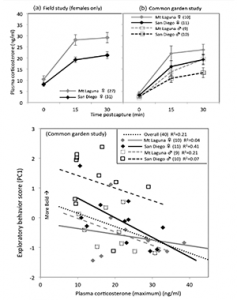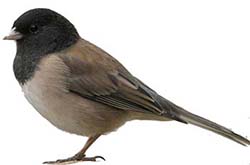
View a short video about how a group of birds split from the main population and evolved in relative isolation near a college campus. The film is is 88 minutes long and all of its parts can be viewed at the Juncoproject.com, though for this activity, only one 16 minute chapter is viewed.
The study explores how behavior changes occur in populations of birds. Birds near campuses have different behaviors than their rural relatives.
The document below contains film questions, data sets, abstract, and a CER (claim, evidence, reasoning) chart. The google slides can be used to supplement class discussions as students try to make sense of the provided data tables.
The film introduces the concept of a “common garden study.” Then student analyze actual data from the study. Common garden experiments are indoor or outdoor plantings of species or populations . They are grown together under shared conditions to explore a range of questions.
Primary Source
The complete study, titled “Boldness behavior and stress physiology in a novel urban environment suggest rapid correlated evolutionary adaptation” include a more detailed description of methods.

Ultimately, the claim being made by the film and the research is that the campus juncos adapted to a more stressful environment, the graph shows that the campus juncos produce less cortisol the the Mt. Laguna juncos. (Cortisol is a stress hormone.) Another graph compares the behavior patterns of the two groups.
Students can also read the abstract for a more detailed explanation of the study, but I don’t usually give them the abstract until after they’ve come to their own conclusions about the graphs.
HS-LS4-3 – Apply concepts of statistics and probability to support explanations that organisms with an advantageous heritable trait tend to increase in proportion to organisms lacking this trait.
HS-LS4-4 – Construct an explanation based on evidence for how natural selection leads to adaptation of populations.
Science Practice: Analyzing and Interpreting Data

